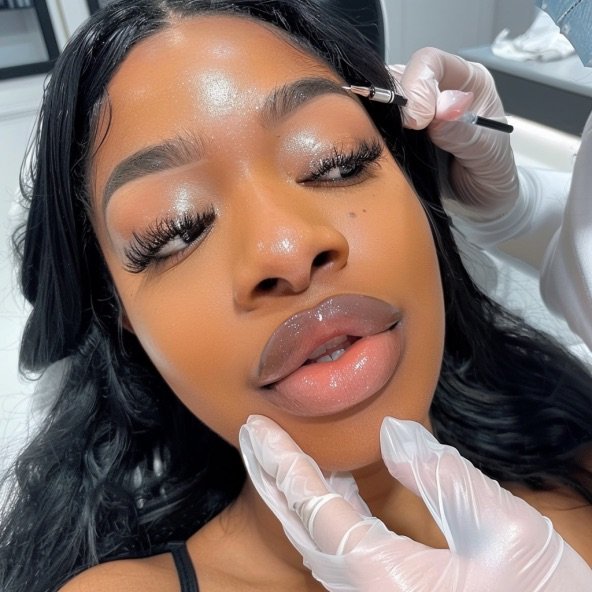ABOUT LIP FILLERS
Lip fillers are a popular cosmetic treatment designed to enhance the volume, shape, and definition of the lips. Typically made from hyaluronic acid, a substance naturally found in the body, these fillers provide a safe and effective way to achieve fuller, more youthful-looking lips.
The procedure is minimally invasive and usually takes less than an hour, making it a convenient option for those looking to enhance their appearance without significant downtime. During the treatment, a qualified practitioner injects the filler into specific areas of the lips, allowing for precise control over the desired outcome.
Results can be seen immediately, with effects lasting anywhere from six months to a year, depending on the type of filler used and individual factors. Many patients appreciate the natural look and feel of lip fillers, as they can be tailored to achieve subtle enhancements or more dramatic changes based on personal preferences.
As with any cosmetic procedure, it’s essential to consult with a licensed professional to discuss your goals, your suitability for the treatment, and understand the potential risks and side effects. With proper care and maintenance, lip fillers can be a fantastic way to boost your confidence and enhance your natural beauty.
Vermilion Border: This is the distinct line that separates the lip from the surrounding skin. It is often more pigmented than the surrounding skin.
Vermilion: The actual red part of the lips, which is highly vascularized and gives the lips their color. The vermilion is covered by a thin layer of skin, making it sensitive.
Philtrum: The vertical groove that runs from the center of the upper lip to the base of the nose. It is a prominent feature of the upper lip.
Cupid's Bow: The double curve of the upper lip, resembling a bow. It is a defining feature of the upper lip's shape.
Labial Commissures: The corners of the mouth where the upper and lower lips meet.
Lower Lip: Generally fuller and more prominent than the upper lip, it also has a vermilion border and is involved in various functions like speaking and eating.
EXTERNAL LIP ANATOMY
INTERNAL LIP ANATOMY
Mucosa: The inner lining of the lips, which is moist and contains salivary glands. This mucosal layer helps keep the lips hydrated.
Muscles: The primary muscle involved in lip movement is the orbicularis oris, a circular muscle that encircles the mouth. It is responsible for actions such as puckering and closing the lips.
Blood Supply: The lips receive blood from branches of the facial artery and the mental artery, which contribute to their color and sensitivity.
Nerve Supply: The sensory innervation of the lips is primarily provided by the trigeminal nerve (cranial nerve V), particularly the maxillary and mandibular branches.


